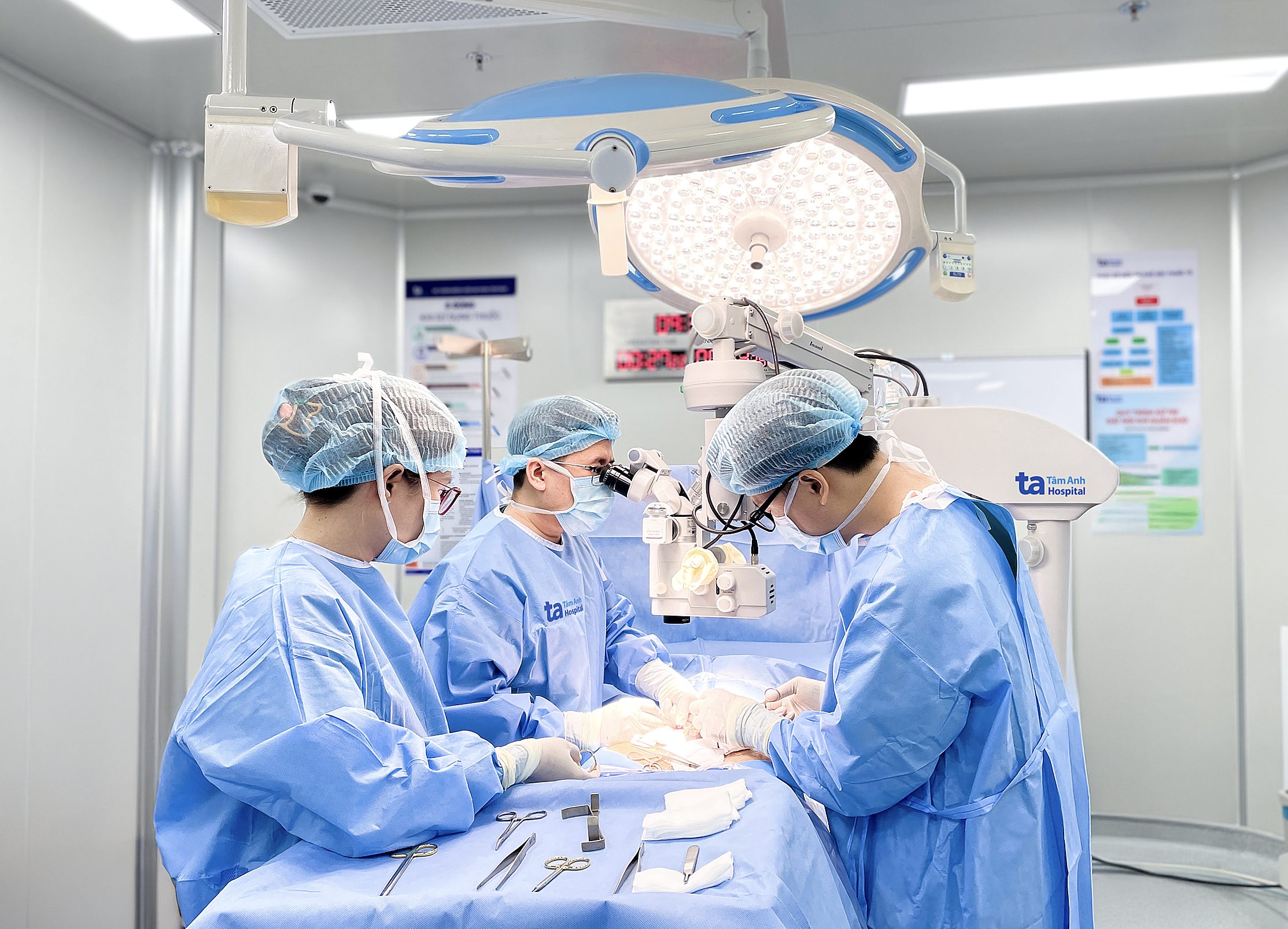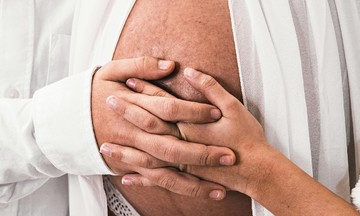Hoai had undergone two unsuccessful in-vitro fertilization (IVF) cycles using sperm retrieved via percutaneous epididymal sperm aspiration (PESA). 100% of his sperm were immotile.
In early July, he consulted Dr. Duong Quang Huy, Head of Andrology at Tam Anh General Hospital - District 8. Dr. Huy diagnosed blocked sperm ducts and varicocele as the cause of his infertility and previous IVF failures.
Dr. Huy recommended a triple procedure: vasovasostomy (reconnecting the sperm ducts), micro-surgical sperm retrieval, and varicocelectomy. The varicocelectomy and micro-surgical reconstruction of blood vessels aimed to improve testicular function, potentially leading to healthier, more motile sperm. This would increase the chances of natural conception and future IVF success. Even without pursuing fertility treatment, the varicocelectomy was necessary to protect Hoai's long-term testicular function.
"The goal is to address the root cause of sperm blockage. However, vasovasostomy can fail or blockage can reoccur, albeit rarely. Therefore, sperm cryopreservation is essential to preserve the patient's chance of fatherhood," explained Dr. Huy.
Using a 30x magnification microscope, Dr. Huy made a small incision in the groin area to access the spermatic cord, which contains the vas deferens, blood vessels, and nerves supplying the testicle. He identified and ligated the dilated veins to prevent backflow of blood, thus reducing testicular temperature and improving function.
Simultaneously, Dr. Huy identified potential epididymal ducts carrying sperm from the testicles. He opened these ducts and collected epididymal fluid, which was then sent to the lab. Embryologists examined the fluid under a microscope and retrieved enough sperm for two IVF cycles. The sperm were then cryopreserved in liquid nitrogen at -196 degrees Celsius.
Finally, Dr. Huy located the blocked section of the vas deferens. The blocked or scarred portion was removed, and the two ends were reconnected to ensure a clear passage and a leak-proof join. The surgery lasted over 130 minutes and was successful. Hoai was discharged the following day. Performing all three procedures in one operation addressed all of Hoai's issues, reduced costs, shortened recovery time, and maximized his chances of conceiving both naturally and through assisted reproductive technology.
 |
Dr. Huy (center) performing the triple procedure on Hoai. Photo: Tam Anh General Hospital |
Dr. Huy (center) performing the triple procedure on Hoai. Photo: Tam Anh General Hospital
Obstructive azoospermia can occur in various locations and have multiple causes, including congenital bilateral absence of the vas deferens, genital tract infections, or sexually transmitted infections (gonorrhea, chlamydia). Trauma from vasectomy, inguinal hernia, scrotal injury, or cysts can also cause the condition. Men with this condition can conceive naturally through surgery to restore sperm duct flow or by direct sperm retrieval and assisted reproduction.
Varicocele is the abnormal dilation of veins within the spermatic cord. The condition often progresses silently and is only discovered incidentally during health checkups or infertility evaluations. If left untreated, the scrotal temperature increases by 1-2 degrees Celsius, reducing sperm count and motility, and increasing the percentage of abnormal sperm. It also increases oxidative stress, which, in the long term, can lead to male hypogonadism, affecting sexual health and overall well-being.
Dr. Huy recommends that men with multiple infertility factors like Hoai seek treatment at facilities offering combined assisted reproduction and andrology services. Treating only obstructive azoospermia and retrieving sperm for IVF without addressing coexisting varicocele significantly increases the risk of failure. Repeated interventions can impact both the patient's finances and health.
Dinh Lam
*The patient's name has been changed.












